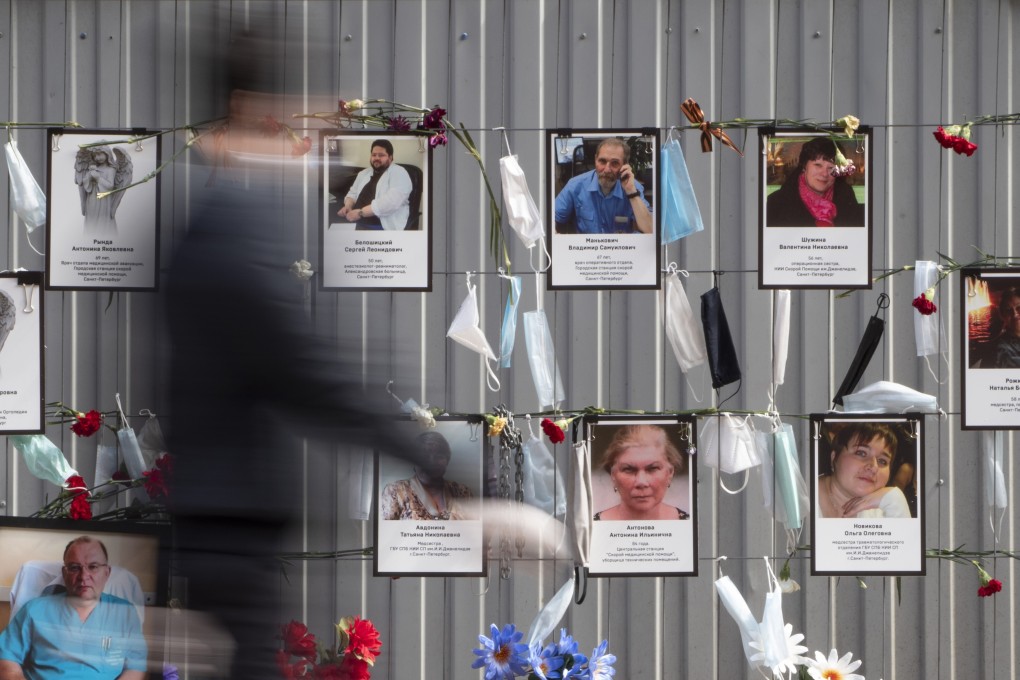The cost of Russia’s low coronavirus mortality numbers
- Russia has the world’s third highest tally of coronavirus cases, but relatively fewer deaths
- Government challenged by reports that official statistics have not included all Covid-related deaths

This past weekend, Russia was supplanted by Brazil as the nation with the second-largest number of coronavirus infections, after the United States. This was seen by some as a sign that Russia had made progress in its fight against the pandemic. The daily infection rate has fallen under 10,000 new cases and has remained there for more than 11 consecutive days.
This has prompted officials to start talking about when and how restrictions should begin to be phased out.
President Vladimir Putin declared via a televised videoconference that the Russian government had the “opportunity to once again focus on our current and long-term agenda”.
Prime Minister Mikhail Mishustin, who himself has recovered from a recent bout with the virus, announced last week that 27 of the country’s 85 regions were ready to start rolling back restrictions. Airlines were set to increase flights by June 1 and measures were being discussed to protect the health of passengers. Moscow, the capital and epicentre of the country’s outbreak, has announced that government offices would soon be reopened as well as additional medical clinics. Russia, it seems, will be back in business soon.
These promising signs, however, have been met by claims that the country’s official death statistics do not correspond to the actual situation in the country. Some outlets, including The New York Times, have reported that Moscow’s death rate may be more than double official numbers. And just last week, more stories of under-reported numbers surfaced in regions like Siberia and the North Caucasus.
These figures present a flip side to the narrative that all is on the mend in the Russian Federation, suggesting that the government still has to come to grips with its first coronavirus wave.